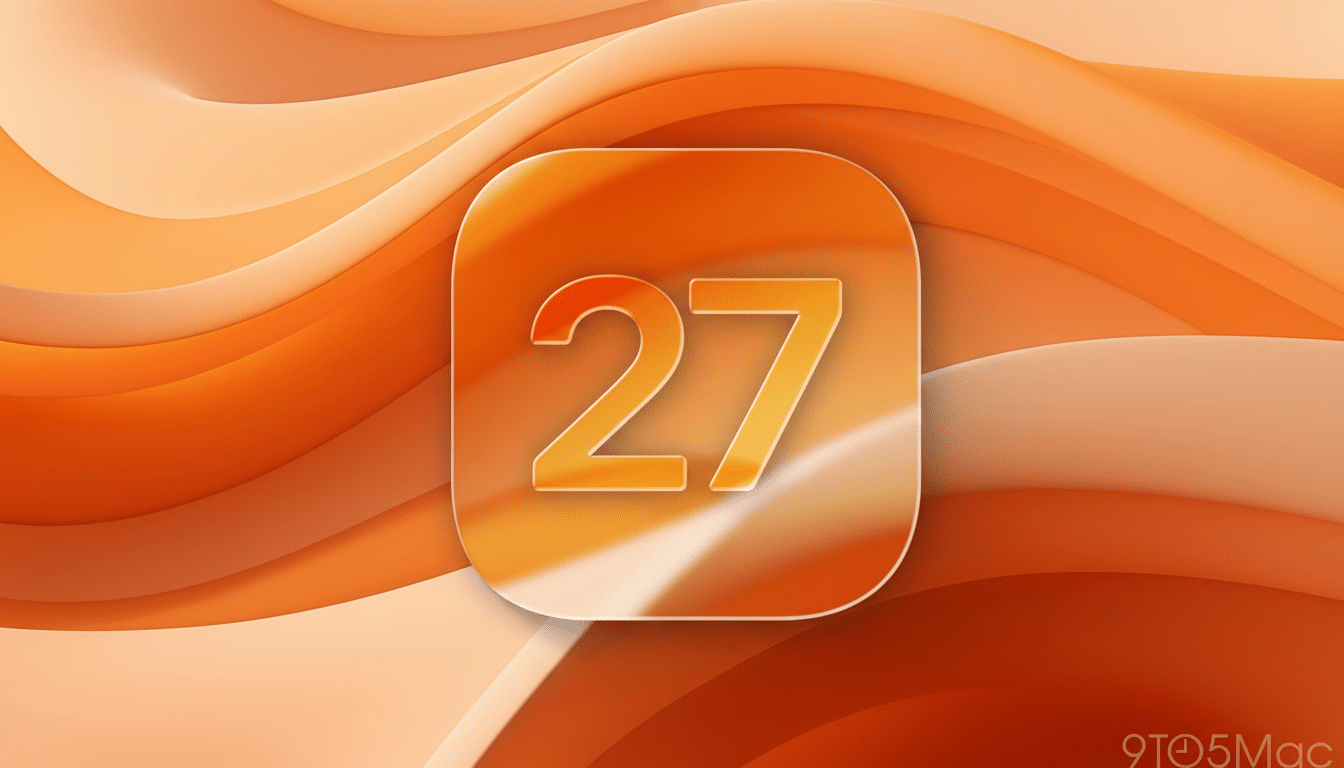Apple’s next iPhone software is starting to take shape, and the early indications suggest that this will be more of an incremental release than previous versions. The emphasis this year appears to be on performance and stability as well as new features, with a leap forward in terms of computational photography.
Here is what we know so far about iOS 27, how it’s projected to be released, and where Apple seems to be focusing its energy.
- What to expect from the iOS 27 timetable and rollout
- Where Apple is probably focusing its iOS 27 efforts
- Testing early AI concepts in health and web search
- Road to hardware readiness and a possible foldable finale
- Privacy, security, and regulation shaping iOS 27
- Compatibility and adoption outlook across iPhone models
- What developers should watch in the iOS 27 beta cycle

What to expect from the iOS 27 timetable and rollout
Apple traditionally introduces big iOS updates at its yearly developer conference and then ships the final build along with new iPhones later in the year. Developer previews and public betas close the gap in timing. Until Apple makes it official, that cadence is still the smart money for iOS 27.
The upshot in practical terms: Developers can probably expect an early test cycle, while for most users, iOS 27 will arrive when the next iPhones do. According to Mixpanel’s historical trackers, new iOS versions often hit 70%-plus adoption levels within months, so the changes introduced here could sweep across the active iPhone base fast.
Where Apple is probably focusing its iOS 27 efforts
Bloomberg’s Mark Gurman reported that iOS 27 would focus on performance and reliability improvements, with AI enhancements rather than a general redesign. That approach closely tracks that of Apple’s occasional “tune‑up” releases, which have historically set the stage for larger hardware maneuvers down the line.
You can expect under‑the‑hood work that shortens app launch time, reduces memory pressure, and improves battery consistency. Apple generally ties those under‑the‑hood tweaks to platform‑wide polish as well: smoother animations, more aggressive background task management, and refinements to continuity across iPhone, iPad, and Mac.
Testing early AI concepts in health and web search
Two rumored features have emerged: an AI health coach and AI‑assisted web search. The health coach would function as an extension of the Health app and Apple Watch, providing context‑aware advice on sleep, activity, and recovery. Apple had previously explored similar coaching ideas internally, The Wall Street Journal reported, and it appears that the company has been working on this for some time.
AI‑led web search might translate into summarization and enhanced page comprehension within Safari, rather than a new search engine. Apple’s platform trend is toward on‑device processing for privacy, with fallback to private cloud compute when needed. Look for iOS 27 to lean into that architecture so people’s personal information remains locked down by default.
Road to hardware readiness and a possible foldable finale
Gurman’s reporting also links this push toward optimization in iOS 27 with new hardware, perhaps even a foldable device. Even with no product announcement, software must be prepared for different screen states to open up interesting new interaction models. That generally manifests itself in things like expanded size classes, better windowing behavior, and more robust adaptive interfaces for developers.

Another factor is Apple’s silicon roadmap. Every new A‑series chip is generally engineered to provide stronger on‑device AI performance and power efficiency. Then, if iOS 27 offloads more intelligence to the device, users may experience faster Siri responses, transcriptions with more nuance, and smarter photo organization — all without the compromise of battery life.
Privacy, security, and regulation shaping iOS 27
Apple’s privacy stance is still a competitive mooring. Look for iOS 27 to continue this trend of on‑device machine learning, clearer data‑use disclosures, and more app permission controls. Apple’s Platform Security Documentation has always shown that hardware‑rooted protections form the basis of iOS and macOS security; focus on AI will likely thread through those same guarantees.
Regulatory changes still shape iOS in some areas, especially on app distribution and default services. Developers can expect increased region awareness, with more details emerging there, while iOS 27 will certainly have further information disclosed in this area on tracking, payments, and data access.
Compatibility and adoption outlook across iPhone models
Apple generally supports iPhones for at least five years; however, each cycle can bring an end to support for the oldest generation models. If iOS 27 does build on‑device AI further, then the (comparatively much faster) newer Neural Engines are what those devices have to look forward to. Apple’s most recent public update pegged the number of active devices in its ecosystem at over two billion, so even marginal platform shifts can have a huge effect.
For users, the central question is whether features will be able to run fully on‑device or if they’ll depend on some cloud processing. Apple usually tries to spell out that distinction, and the firm’s privacy marketing seems to imply iOS 27 will continue processing sensitive information locally wherever possible.
What developers should watch in the iOS 27 beta cycle
Look for fresh SDKs, revised design guidance around adaptive UIs, and new hooks into system intelligence. If health coaching tools do arrive, Apple could make frameworks available for apps to contribute data to them or surface “moments” responsibly. Safari: AI‑assisted reading or summarization would open up new extension possibilities.
As it is every year, the developer beta period will be crucial. Check performance regressions, background task limitations, and memory behavior first. Pupovac said teams that ship in regulated categories — like health, finance, or education — are those who should think ahead about any new regional rules, entitlements, or privacy dialogues.
The headline: iOS 27 appears to be a strategically disciplined release. If Apple sticks to form, you’re getting a faster, more reliable iPhone with smarter, privacy‑first AI — and developers get cleaner canvases to create what comes next.

